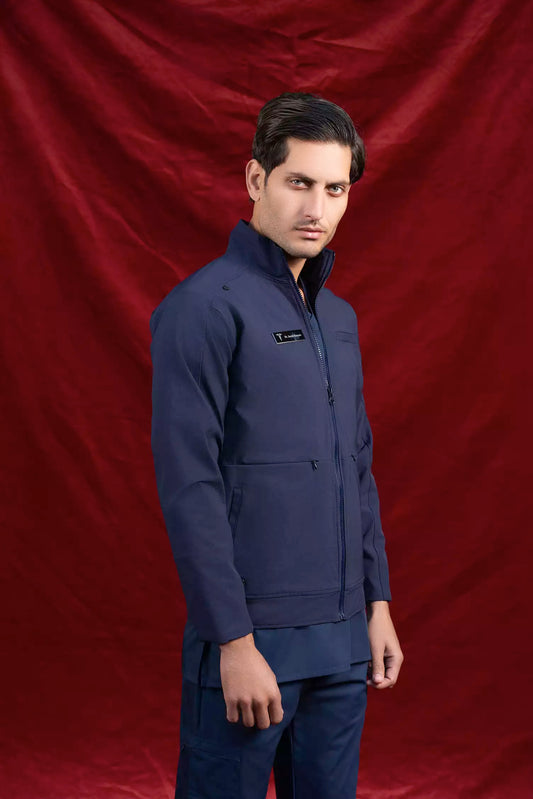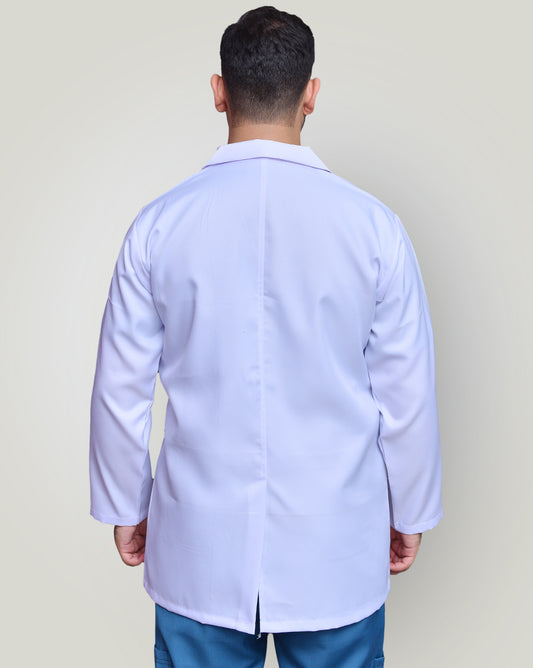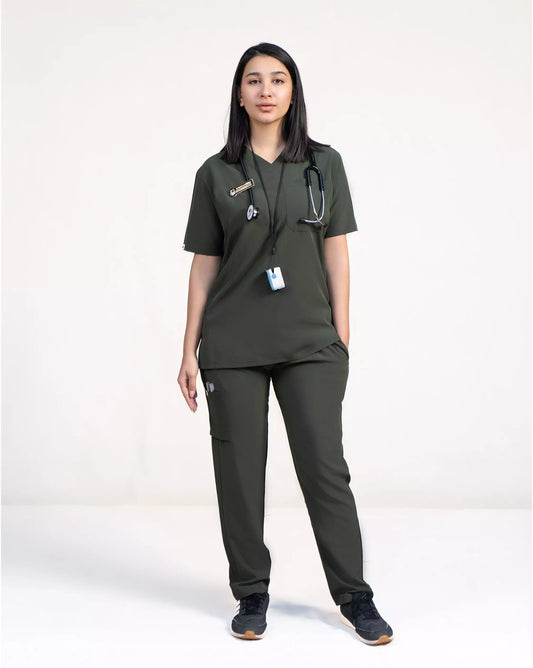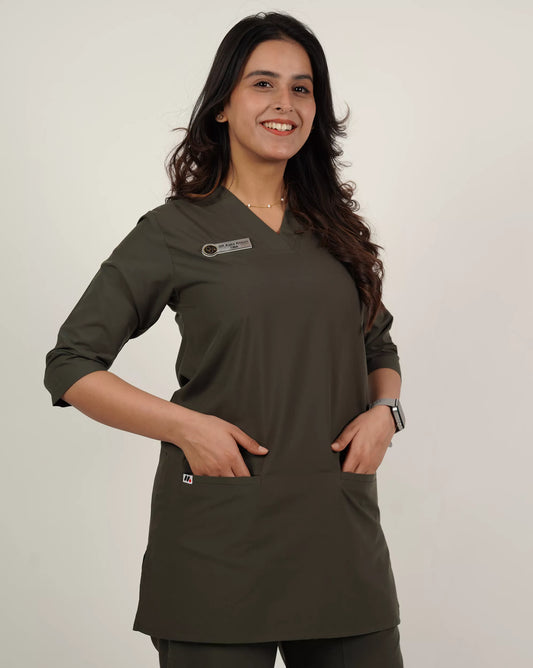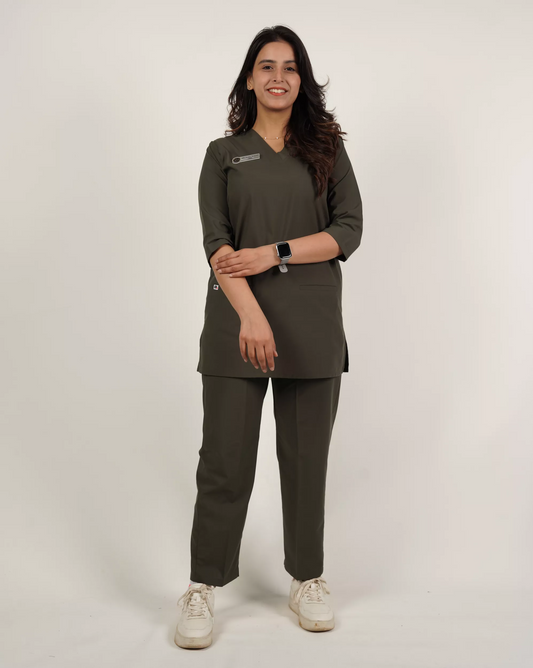Best Surgical Scrub Fabrics 2025

Scrubs are your work partner. They should always make you feel better and must last long. Picking the right surgical scrub fabric keeps you comfy during crazy shifts. It also keeps germs away and holds up to washing. A bad fabric? It’s hot, stiff, and annoying. Let’s see why different fabric types for scrubs matter for comfort, cleanliness, and toughness in 2025.
Impact on Surgeon Comfort & Performance
Comfort keeps you focused. Imagine a 12-hour surgery period in tight, uncomfortable and sweaty scrubs. You’d be miserable. Breathable scrub fabric lets air flow so you stay cool. Stretchy fabrics let you move without fighting your clothes.
Importance of Hygiene & Durability
Hospitals are germ cities. Antimicrobial scrub materials stop bacteria from spreading. That’s huge for safety. Scrubs also get washed a lot. Durable surgical scrubs will not tear apart or discolor at all. The right fabric keeps you clean and looking sharp.
Quick Overview of Top Fabric Types
In 2025, the best scrub fabrics are cotton, polyester, blends, and spandex. Cotton is soft and airy. Polyester is tough. Blends mix the best of both. However, spandex is highly stretchable. There are also special fabrics like antimicrobial ones or eco-friendly options. Let’s get started.
Key Functional Features of Scrub Fabrics

Great scrubs need three things. They must breathe, wick sweat, and stretch. These make long days easier.
Breathability for Longer Shifts
Breathable scrub fabric keeps you from overheating. Air flows through, so you don’t feel sticky. This is a must for long shifts or hot operating rooms. Cotton and other types of its blends can be good, too.
Moisture-Wicking to Stay Dry
You sweat in the OR. Perspiration can be totally absorbed by moisture-wicking fabrics. Then, you feel comfortable and dry. Polyester and some high-tech blends do this best.
Stretch for Mobility & Fit
Healthcare means moving. You reach, bend, and twist all day. Spandex fabrics are stretchy, and they help you to move easily. They fit snug but don’t hold you back.
Top Fabric Types Used in Surgical Scrubs

Let’s look at the main fabric types for scrubs. Each has good and bad sides.
Cotton: Natural, Soft, Breathable
Cotton feels like a hug. It’s soft and super breathable. Perfect for long hours. It’s gentle on skin, too. But it wrinkles fast. Stains stick to it. And it may not last through tons of washes.
- Pros: Soft, airy, kind to skin.
- Cons: Wrinkles, stains, wears out quicker.
Polyester: Wrinkle-Resistant & Durable
Polyester is a tank. It’s strong and doesn’t wrinkle. It dries fast after washing. Great for durable surgical scrubs. But it’s not as breathable. Some say it feels less cozy than cotton.
- Pros: Tough, wrinkle-free, dries quick.
- Cons: Less airy, can feel synthetic.
Cotton-Polyester Blends: Blends of Both
Cotton-poly blends mix softness with strength. They are highly comfortable, just like soft cotton, but tough like polyester. They are highly resistant to wrinkles and different types of stains. These are some of the best scrub fabrics for most folks.
- Pros: Comfy, strong, easy to care for.
- Cons: Not as soft as pure cotton.
Spandex Blends: Flexibility & Movement
Spandex adds bounce. Mixed with cotton or polyester, it stretches. Perfect for busy roles. These fabric types for scrubs fit tight but move with you. They may not last as long with heavy washing.
- Pros: Stretchy, fits well, great for moving.
- Cons: Wears out faster, may fade.
Specialized & Performance Fabrics
Today’s surgical scrub fabric has fancy features. Think germ-fighting or easy-care options.
Antimicrobial Fabrics for Germ Protection
Antimicrobial scrub materials kill germs. They use stuff like silver ions. This keeps you and your patients safer. They also cut down on smells. These cost more but shine in places like ICUs.
- Pros: Fights germs, less odor.
- Cons: Pricey, may lose power over time.
Wrinkle-Resistant & Easy-Care Materials
Ironing scrubs? No thanks. Wrinkle-resistant fabrics, like polyester blends, stay neat. Easy-care ones wash and wear without hassle. They save time and keep you looking good.
- Pros: No ironing, stays crisp.
- Cons: May not breathe as well.
Color-Retaining Fabrics That Don’t Fade
Faded scrubs look sloppy. Color-retaining fabrics, usually polyester-based, stay bright. They handle lots of washes. Choose brands that promise colors won’t fade for a pro look.
- Pros: Bright colors, looks sharp.
- Cons: Sometimes fewer color choices.
Eco-Friendly & Sustainable Fabric Options
Green is in for 2025. Eco-friendly surgical scrub fabric helps the earth and feels great.
Bamboo & Organic Cotton
Organic cotton avoids dangerous pesticides. It’s soft and safe for sensitive skin. Bamboo is breathable and naturally antimicrobial. Both are green but may not last as long as synthetics.
- Pros: Earth-friendly, soft, skin-safe.
- Cons: Less tough, costs more.
Recycled Fabric Innovations
Old plastic bottles are used in the preparation of recycled polyester. It’s strong and green. It works like regular polyester but hurts the planet less. Perfect for durable surgical scrubs.
- Pros: Eco-friendly, tough, wrinkle-free.
- Cons: Seems less natural.
Ethical Brands & Green Certifications
Various brands use certifications like OEKO-TEX. This represents that these fabrics are ethically made and are very safe to use. Buying these supports a better world.
- Pros: Ethical, no harmful chemicals.
- Cons: Costs more.
Choosing Fabrics Based on Use Case
Your job decides your fabric. Let’s match fabric types for scrubs to your day.
Best for Long or Double Shifts
Long shifts need comfort. You can stay cool by wearing breathable scrub fabric made of cotton or cotton-poly mixes. A bit of spandex adds stretch. These keep you going strong.
Top Pick: Cotton-poly-spandex blend.
Best for Hot/Humid Workplaces
Hot ORs or humid places need airy fabrics. Bamboo or polyester cools you by wicking away perspiration. They keep you dry when things heat up.
Top Pick: Polyester or bamboo.
Best for High-Wash Environments
Washing scrubs daily is rough. Polyester or cotton-poly blends are durable surgical scrubs. They don’t fade or fray. Antimicrobial ones add extra cleanliness.
Top Pick: 65/35 cotton-poly blend.
Conclusion
Picking the right surgical scrub fabric makes work easier. It keeps you comfy, clean, and ready. Your job and style guide your choice. Medfit’s 2025 best scrub fabrics are good for all healthcare workers. Cotton-poly-spandex blends are tops. They’re breathable, stretchy, and tough. Want extra germ protection? Go for antimicrobial scrub materials. Love the planet? Try organic cotton or recycled polyester. On a budget? Cotton-poly blends are great. Medfit’s scrubs offer antimicrobial and stretchy features. They cost more but feel amazing. Shop at Medfit for lots of choices. Always go for OEKO-TEX or GOTS labels fabrics as they have the best quality of fabric types for scrubs.
FAQs
What’s the comfiest surgical scrub fabric?
Cotton or cotton-poly blends are soft and breathable. Best for long hours.
Are polyester scrubs good for hot places?
Yes. Polyester wicks sweat and dries fast. Great for hot or humid spots.
How do antimicrobial scrub materials work?
They use silver ions to zap germs. Keeps scrubs cleaner and fresher.
What fabric lasts through lots of washing?
Polyester or cotton-poly blends are durable surgical scrubs. They stay bright.
What’s the best fabric for long surgeries?
Cotton-poly-spandex blends are breathable and stretchy. Perfect for long shifts.
Are bamboo scrubs a good pick?
Bamboo is soft and antimicrobial. It’s green but less durable.
Where can I buy green scrubs?
Medfit has a variety of eco-friendly fabric types for scrubs. Look for certifications.

